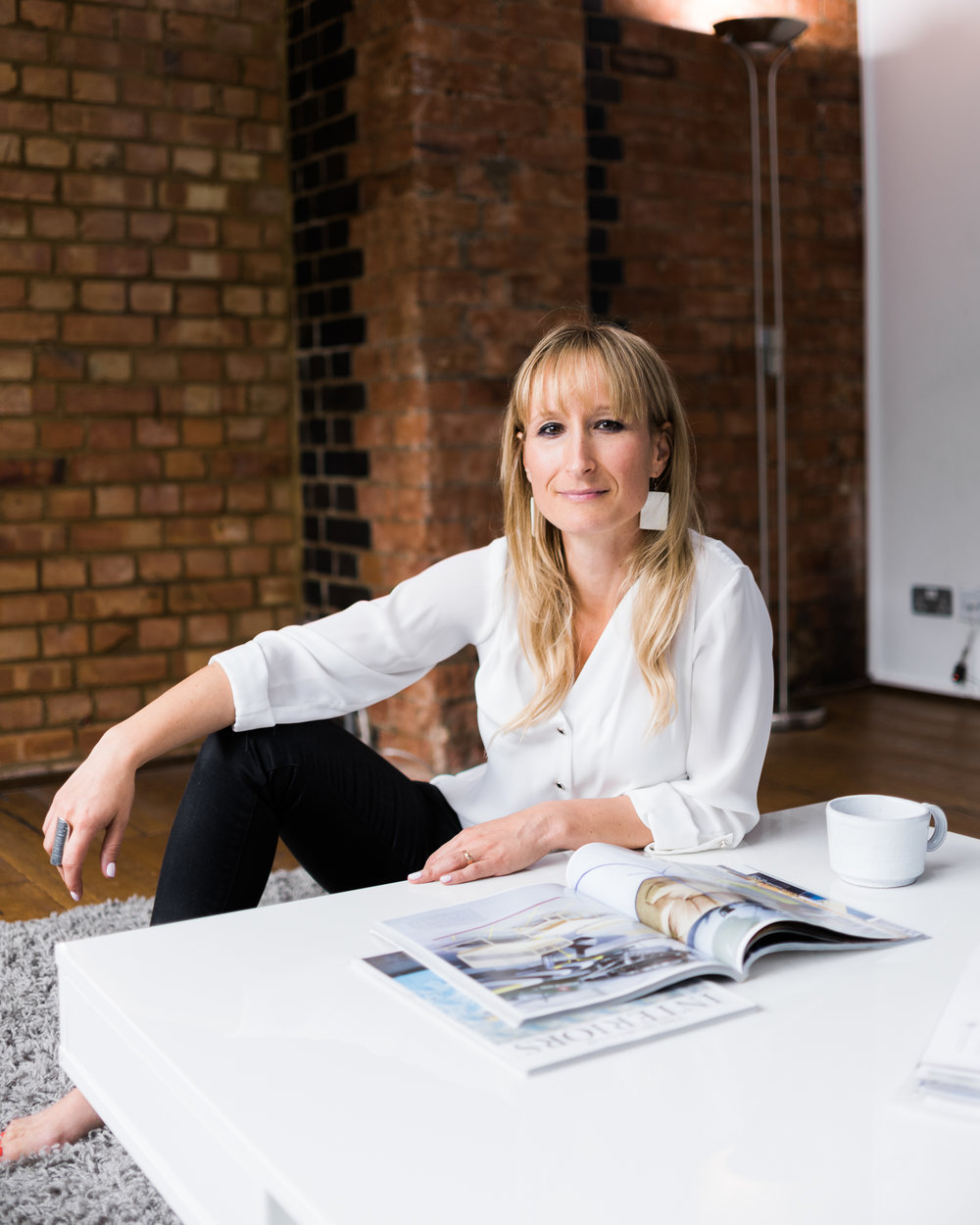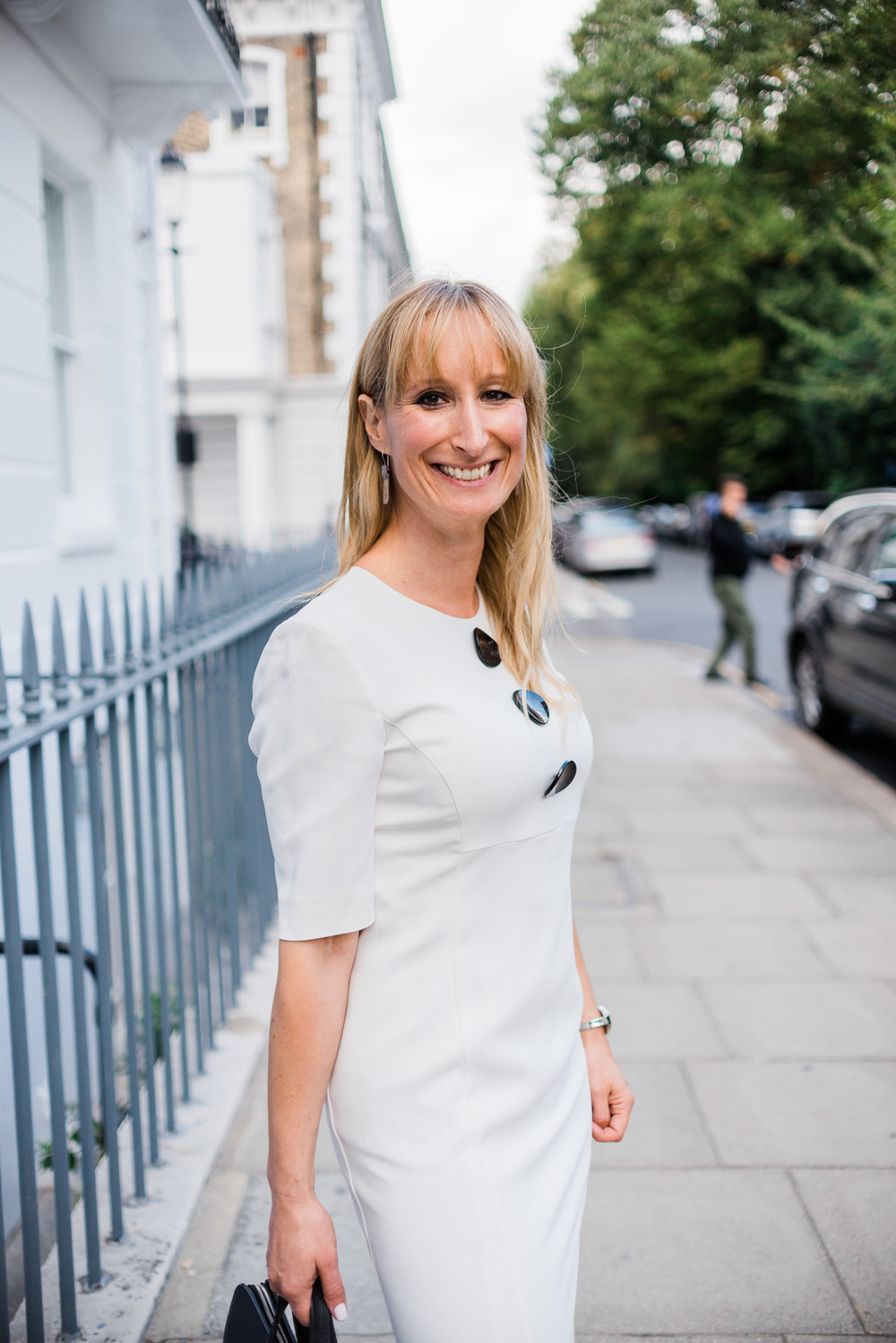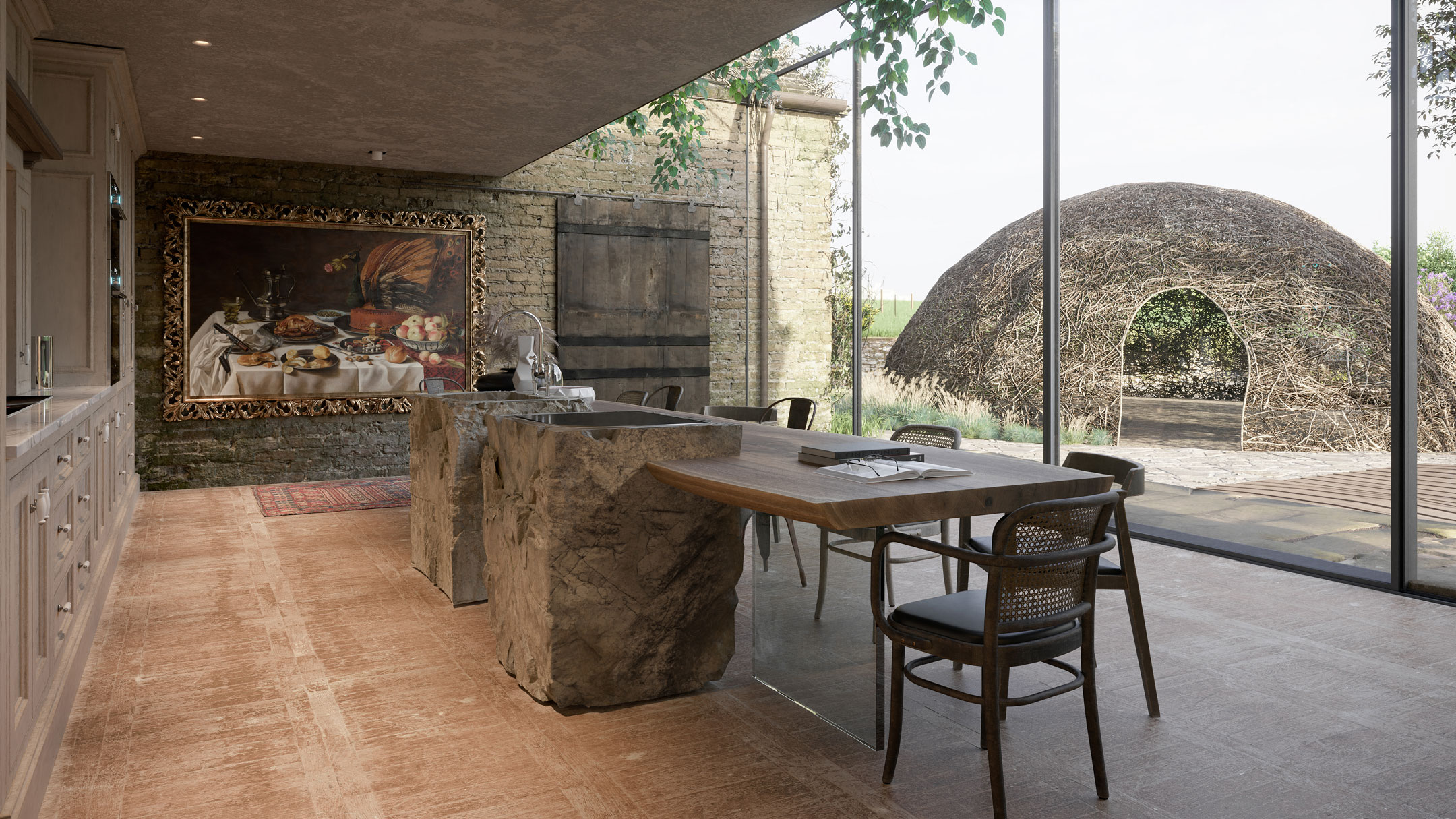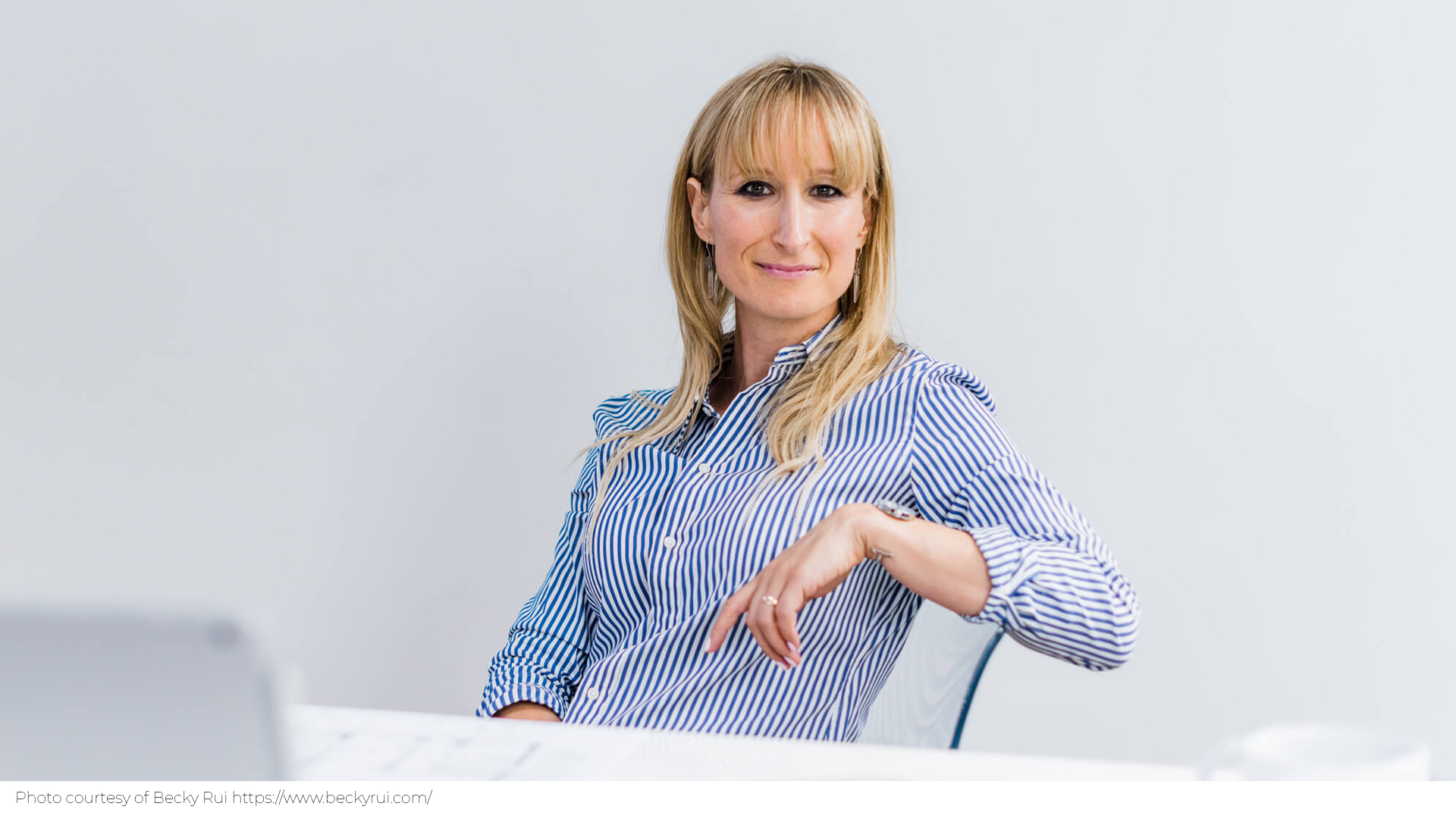These words suit our guest perfectly! Jo Chrobak has built an inspiring career and has carved her own path to find her blue ocean. In addition to being a highly experienced interior and architectural designer, Jo is an entrepreneur, a certified business coach, and a seasoned traveler.
Jo Chrobak graduated from the University of NSW at the top of her class in 2007. Throughout her career, she has worked for small and large design firms worldwide such as Thomas de Cruz, EKD, Collins and Turner, Steinlia, WATG, Attol Architecture, and worked on an insane variety of projects. She’s designed hotels, convention centers, airports, villas, listed properties, schools and churches, master-planned destination cities, and many more.
All throughout her fruitful and diverse career path, Jo harbored a dream of starting her own multi-disciplinary design studio. In 2016, she founded Invent Design Create Ltd in Reading, Berkshire, and now specialises in commercial and one-off residential projects requiring creative responses to complex briefs. Two years later, she launched the Interior Designer’s Business School with her partner Darius, which provides an innovative interior design mentorship program helping aspiring designers get into the industry. It’s an online course with a coach’s support where students learn the art of interior design, work with real clients and acquire the skills necessary to run small-scale projects. As a result, anyone with a passion for design can gain the knowledge, skills, and experience necessary to start a practice, no matter what age or location in the world.
Want to see how Jo Chrobak balanced her passions, achieved multifaceted professional success, and created a business helping people make meaningful careers? Let’s find out! On top of that, you’ll learn the 3 best and 3 toughest things about running an interior design business, and the ultimate secret to attracting clients!
Jo, when and how did you understand that you wanted to be an architectural and interior designer?
I was one of those people who always knew, although I never thought it would be possible for me when I was younger. I loved school, but I was never a top student, and to get into architecture, you needed to achieve a score close to 100%. Still, I never gave up, and I found a way!
You’ve got incredible experience of working in different countries and on various projects! Can you say what kind of projects you love working with best?
When I first started, I loved working on anything that required onsite construction work. Then I became obsessed with large-scale projects because I was working for an international multi-disciplinary firm. After that, I worked on luxury properties and developed my interest in detailing and joinery.
Once I started my own business, I developed a passion for interiors. Now that we’ve had hundreds of projects through the studio, I see that I’m drawn to high-density residential and mixed-use commercial work alongside interesting one-off projects.
It looks broad, but the link is that I like a challenge — we work on what most call “difficult projects”. We say yes to projects that others are afraid of, or we’re called in to fix projects that others haven’t successfully completed.

What inspires you in design?
Everything! It’s a terrible answer, but I find it difficult to switch off, which is why I have so many ideas. I’m endlessly creative, which comes through in my work as well as in my mentoring. I’m not afraid to share my ideas because I know I’ll have a million more tomorrow. That can be pretty refreshing in such a closed, often cliquey industry.
What made you realise that designers need a school to take off their careers? What did the market lack?
It was our dream to start a school, but it isn’t a school that designers specifically need; it’s the support. It turns out that the only way I could manage mentoring alongside running my studio, worked with the school framework, so we went with it.
I’m not afraid to share my ideas because I know I’ll have a million more tomorrow.
What was and is still lacking in both the architecture and interiors industries is a practical approach. Design schools are very theory-based and academic, something I struggled with at university myself. It still puzzles me that universities, colleges, and educational institutions teach interiors and architecture this way when these are predominantly practical professions.

Do you think your program is changing the market of interior design services?
I mentor in a way that allows students to start working with real clients straight away (no matter their level of experience). That means that some designers who aren’t proficient in the technical side focus their services on skills they bring from previous careers mixed with specific skills I’ve taught them that work with their niche.
We also teach architects, engineers, and highly experienced interior designers. They tend to introduce a broader range of services that work with their interests, so, no matter what level, our designers create unique offerings that no one has ever thought of before. Hopefully, these are changing the interior design services market for the better and making interior design accessible to a much broader range of clients.
Does your school supplement or replace the formal education for interior designers?
What we do is unique. We can replace formal education such as the type of information taught in a typical diploma course because we teach the necessary elements. Then the practical application is undertaken in practice. But what universities teach and the way they teach is very different, so there isn’t a comparison.

Do you think formal education for interior designers should change? If so, how?
Yes! In a way, this is what I have been fighting for. Unfortunately, the outdated (and hugely discriminatory) system that is no longer relevant in today’s world is what all regulatory bodies and educational institutions hold in such high regard.
Anyone who has learned the basics of interiors or architecture knows that learning basic skills such as drawing or design can’t be understood without application, so directing the focus to practical experience rather than theoretical knowledge is where things need a massive shift.
No matter what level, our designers create unique offerings that no one
has ever thought of before
There needs to be an alternative path into the profession that is practise- or experience-based. Currently, courses, institutions, and regulatory bodies expect you to dedicate (and pay for) years of design theory-based knowledge. After graduating, you need to navigate the practical side of things on your own. Creatives often learn differently. Sitting in a classroom for 8 hours or writing essays on the evolution of design will never help them become experts in the field, but actively partaking in a project, taking responsibility, and being physically involved helps them learn and excel quickly.
Our program is the first of its kind to propose a trade-style avenue into the industry. So you can see the whole system needs to change to allow more hands-on learners, or those who can’t afford to take time out to study for years, the same opportunity to get into the profession.
How do CGI pros create hyper-realistic architectural renders and infuse them with stories?
Can every interior designer learn to run a business?
Yes and no… It’s not necessarily the type of designer you are, but more the type of personality. If you’re a passionate person who takes responsibility, doesn’t make excuses for failures, and can successfully solve problems — then yes, you’ve got what it takes to run a business (and succeed as a designer).
Running a profitable design business is fun, rewarding and you get to wake up every day doing what you love, but you need to be driven by your passion, you need to be motivated, and you need to want to make it work.
Those who don’t make it are the ones who expect everything to fall into their lap without much effort. In saying that, our success rate (for an online course, mind you!) is typically close to 89-90%. So either we manage to ignite that flame in our mentees or the collaborative, supportive environment we create helps lift them to the level required to succeed. Typically, if you apply yourself to do the minimum, you’ll make it.
What are the hardest three things about running an interior design business?
Once you’re an experienced designer, the challenges are different (more related to staying fresh, motivated, relevant). As a start-up, the hardest things about running an interior design business might surprise you! Typically, the things I see my mentees struggle within the first 12 months are:
- Believing in yourself! No matter how skilled or educated, most don’t think they’ve got what it takes to talk to a builder or client confidently or with conviction. In the beginning, they constantly doubt themselves. This is why we incorporate coaching into our program, as it’s not something that comes naturally to most, and many just need a bit of reassurance!
- Staying organised and working efficiently. We make an effort to ensure our mentees have a workflow, so we provide them with business and project templates alongside a system to follow step by step. This helps them navigate their projects, so they always know what to do next.
- Over-promising (then regretting). Most start-up designers will promise the world, hoping their client will say yes to working with them! Once they realise how much they undersold themselves, they regret it. I teach systems for pricing to prevent this from happening — although unfortunately, many still make this mistake, but only once…

What are the three best things about being a self-employed designer?
I could list a hundred! But I’d say in this order, the top three are:
- The freedom to create your future, your timetable, the amount you want to earn, the amount you want to work, and manage your own time on your own terms.
- You get to choose which clients and projects you want to work with, so you typically don’t feel like you’re working at all. The bonus is that you’re also usually working with happy, like-minded people who respect you, so it’s a real positive “workplace” scenario.
- And of course, the thing that attracts most designers in the first place is the ability to do something creative. When you work for someone else, the design work is typically done by them (because it’s the fun bit), so when you work for yourself, you get to do the creative part, and it feeds our designer souls with happiness.
Do you use CGI in your projects? How do you use it?
Absolutely. We use CGI’s at every stage of the design process. At the beginning to explore/communicate ideas and feel confident with our design decisions, then later to explain complex details. For interiors, we often rely on professional interior rendering services to help clients picture the final look with clarity. It’s critical to helping our clients make confident decisions quickly.
Poor communication and slow decision-making are time suckers, so helping our clients visualise what they’re getting saves us time by minimising changes.

Do you think CG materials can help interior designers at marketing themselves?
This is how we market ourselves to new client niches when we haven’t got a similar project in our portfolio, but know we can do the job, so yes! In fact, 3d architectural rendering services allow us to present large-scale projects to potential clients even before we’ve built up a portfolio in that niche. Clients don’t realise that no two projects are ever the same, but they continue to ask to see similar projects in your portfolio. For this reason, CG materials can help you to land a job by showing off the skills/experience that you have without having previously completed that kind of project.
Helping our clients visualise what they’re getting saves us time by minimising changes.
It also allows you to adjust the design of a previous project to your liking, as sometimes there are changes that affect a project outside of your control. In a way, it gives you a second chance with a project!
What does an interior designer need to do to attract clients?
No one ever believes me, but the biggest winner is always to be yourself. When I’m analysing why someone’s marketing strategy doesn’t convert, it’s always because they copied someone else’s services or were trying to be something they’re not. Clients are savvy; they will smell something’s wrong from a mile away! But in contrast, they will also be attracted to you because you’re you and will pay you because you’re you! Tools like 3d renderings for interior designers also support this process, giving authenticity and visual proof of a designer’s vision. Most people have a hard time believing that (so that’s where the coaching comes in!)
CG materials can help you to land a job by showing off the skills/experience that you have without having previously completed that kind of project

What’s your favourite thing about being an interior designer? And about being a mentor?
It’s the same for both! It’s making a massive transformation in someone’s life, whether that’s creating a space that has changed the way someone lives or helping a hopeful designer realise that success is possible for them (and helping them achieve it).
Are there any online resources you’d advise our readers to read to understand interior design marketing better?
This is tough because there is a lot online that confuses and overwhelms rather than guides in the right direction. That’s the beauty of the internet, you can find anything, but there’s also so much information it’s confusing!
The best advice I can give here is to find a system that you like and stick to that ONE system until you get results. There is an endless number of ways to market your business successfully. The problem is that most designers don’t stick it out until they see results. So find a system that you like — and follow through until it works (don’t give up after a week…)
We are grateful to Jo for sharing her experience and insights with us. It’s such a privilege to talk to people with passion and drive who explore, question things, and bring innovation. We hope you now feel as inspired and energized as us!
Need your project visualized in photorealistic quality? Want to show clients your ideas on your iPod or by just sending them a link? Contact us for CGI services. We’ll bring your design to life, highlight its benefits and wrap it in a beautiful visual story.

Irma Prus
Content Writer, Copywriter
Irma writes articles and marketing copy for ArchiCGI. Her dream is that more people discover the power of CGI for architecture. Irma is into neuromarketing, ruby chocolate and Doctor Who series.



